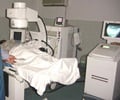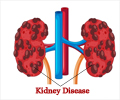More than half of the benchmarks used today to measure kidney disease progression, patient outcomes and more were of middle or low quality, said study published in the Journal of the American Society of Nephrology.

‘Chronic kidney disease (CKD) affects 14 percent of adults in the U.S. Patients who go on dialysis face both an exhausting treatment regimen and a high rate of death with 50 percent of patients dying within three years.’





A study published in the Journal of the American Society of Nephrology evaluated national kidney disease quality metrics -- the benchmarks used today to measure kidney disease progression, patient outcomes and more -- and found that more than half were of middle or low quality. "As a nephrologist, I see patients with chronic kidney disease and end-stage renal disease, and when we discuss dialysis, they ask me, 'Is that all there is? Why aren't there innovative treatments for kidney disease like there are for other diseases?'" said corresponding author Mallika Mendu, MD, MBA, medical director for Quality and Safety at Brigham and Women's Hospital, director of Quality for the Brigham Renal Division, and a practicing nephrologist. "One of the reasons is that success is contingent on getting the details right. When we measure quality of care to determine if a treatment is working for a patient, we need to be certain we're measuring the right thing."
Mendu and other members of the American Society of Nephrology Quality Committee evaluated 60 existing kidney quality metrics from multiple kidney and quality organizations. These included metrics for CKD prevention, slowing CKD progression, kidney replacement planning, and dialysis management, among others. The team evaluated the measures based on a set of criteria, including whether the metric led to meaningful improvements and appropriate care, whether it was based on high-quality evidence, and more. Based on their defined criteria, they found that 29 of the metrics (less than half) had high validity, 23 had medium validity and 8 had low validity.
The team advocates for shifting the focus to metrics that matter most to the patient and most accurately reflect kidney health or disease progression, for example the "optimal starts" metric which measures how many patients start dialysis as an outpatient on home dialysis or receive a transplant before they need dialysis.
"We think about quality and safety metrics on a daily basis, but we need to understand which metrics truly reflect and drive the care improvements that matter to our patients," said Mendu. "Being in the quality and safety space has given me an appreciation for why defining metrics accurately matters so much. When done well, metrics can foster improvements in care. We think the findings from our study will help to inform policy, regulation and legislation moving forward. We believe that this study is timely in light of the Advancing American Kidney Health initiative, which has the potential to advance kidney care if success is defined and measured accurately."
Source-Eurekalert















